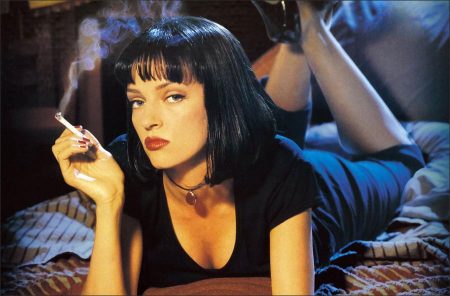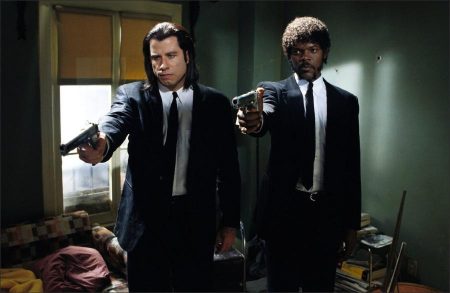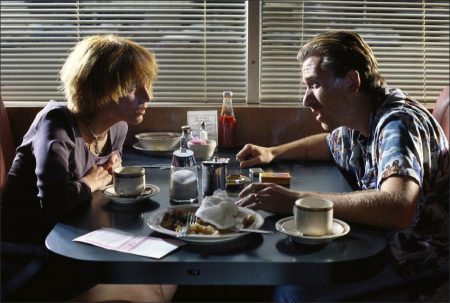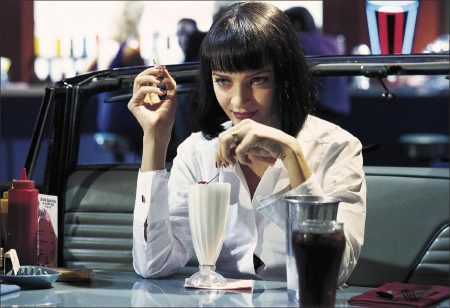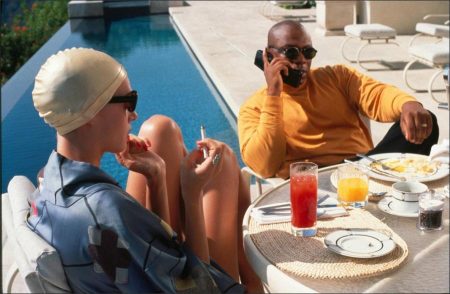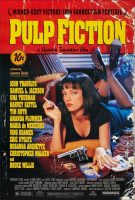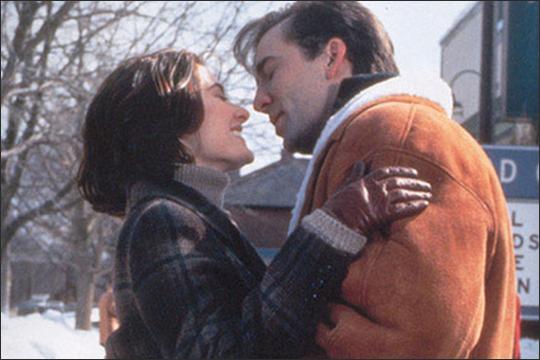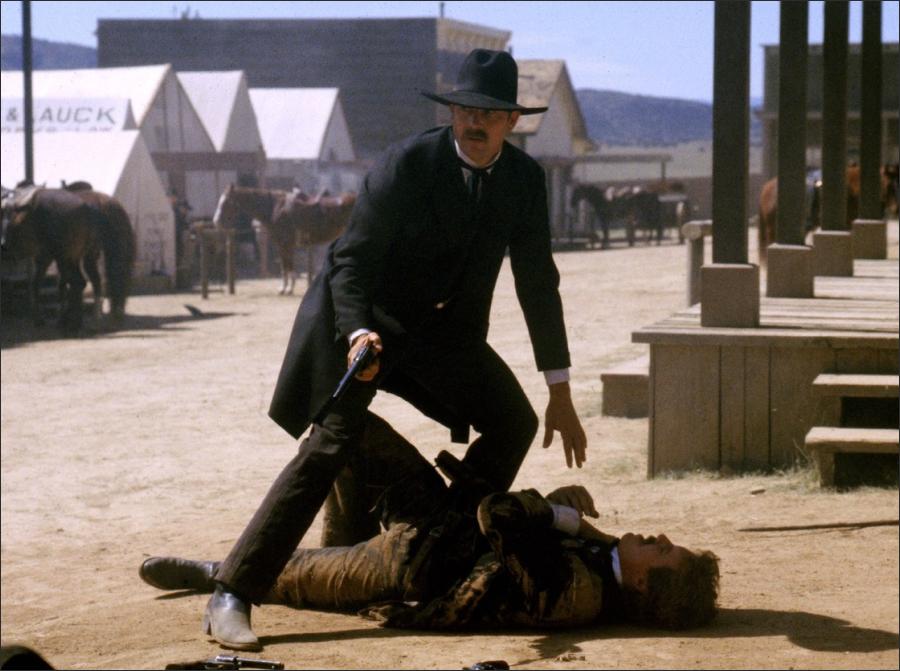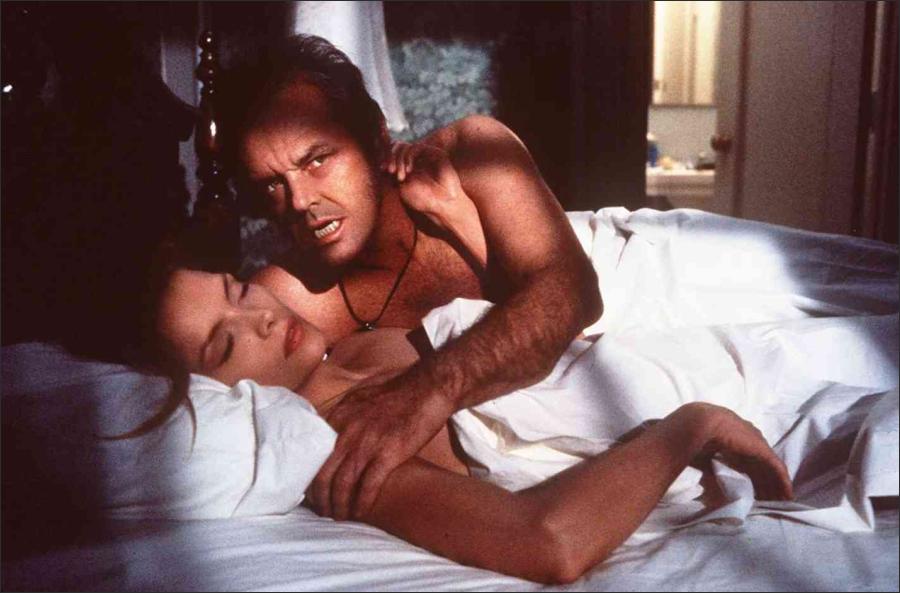Taglines: I don’t smile for pictures.
Pulp Fiction movie storyline. Vincent Vega (John Travolta) and Jules Winnfield (Samuel L. Jackson) are two hit men on the hunt for a briefcase whose contents were stolen from their boss, Marsellus Wallace (Ving Rhames). They run into a few unexpected detours along the road. Marsellus is out of town, and he’s gotten Vincent to take care of his wife, Mia (Uma Thurman. That is, take her out for a night on the town. Things go smoothly until one of them makes a huge error.
Butch Coolidge (Bruce Willis) is a boxer who’s been approached by Marsellus and been told to throw his latest fight. When Butch ends up killing the other boxer, he must escape Marsellus. Pumpkin (Tim Roth) and Honey Bunny (Amanda Plummer) (not their real names) are two lovebirds/thieves who have decided to rob the restaurant they’re currently eating at. But the restaurant doesn’t turn out to be as easy as the other places they’ve robbed.
Pulp Fiction is a 1994 American black comedy neo-noir crime film written and directed by Quentin Tarantino, from a story by Tarantino and Roger Avary. Directed in a highly stylized manner, Pulp Fiction connects the intersecting storylines of Los Angeles mobsters, fringe players, small-time criminals, and a mysterious briefcase. The film’s title refers to the pulp magazines and hardboiled crime novels popular during the mid-20th century, known for their graphic violence and punchy dialogue.
The screenplay of Pulp Fiction was written in 1992 and 1993, and incorporated some scenes originally written by Avary for True Romance. Its plot, as in many of Tarantino’s other works, is presented out of chronological order. The film is also self-referential from its opening moments, beginning with a title card that gives two dictionary definitions of “pulp”.
Considerable screen time is devoted to monologues and casual conversations with eclectic dialogue revealing each character’s perspectives on several subjects, and the film features an ironic combination of humor and strong violence. Its script was reportedly turned down by Columbia TriStar as “too demented”. Miramax co-chairman Harvey Weinstein was instantly enthralled with it, however, and the film became the first that Miramax fully financed.
Pulp Fiction won the Palme d’Or at the 1994 Cannes Film Festival, and was a major critical and commercial success upon its U.S. release. It revitalized the careers of John Travolta (who received an Academy Award nomination), Samuel L. Jackson, and Uma Thurman. It was also nominated for seven Oscars, including Best Picture; Tarantino and Avary won for Best Original Screenplay. The nature of its development, marketing, and distribution – and its consequent profitability – had a sweeping effect on the field of independent cinema.
>h4>About the Filming
Principal photography commenced on September 20, 1993. The lead offscreen talent had all worked with Tarantino on Reservoir Dogs—cinematographer Andrzej Sekuła, film editor Sally Menke, production designer David Wasco, and costume designer Betsy Heimann. According to Tarantino, “[W]e had $8 million. I wanted it to look like a $20–25 million movie. I wanted it to look like an epic. It’s an epic in everything—in invention, in ambition, in length, in scope, in everything except the price tag.”
The film, he says, was shot “on 50 ASA film stock, which is the slowest stock they make. The reason we use it is that it creates an almost no-grain image, it’s lustrous. It’s the closest thing we have to 50s Technicolor.” The largest chunk of the budget—$150,000—went to creating the Jack Rabbit Slim’s set. It was built in a Culver City warehouse, where it was joined by several other sets as well as the film’s production offices. The diner sequence was shot on location in Hawthorne at the Hawthorne Grill, known for its Googie architecture.
For the costumes, Tarantino took his inspiration from French director Jean-Pierre Melville, who believed that the clothes his characters wore were their symbolic suits of armor. Tarantino cast himself in a modest-sized role as he had in Reservoir Dogs. One of his pop totems, Fruit Brute, a long-discontinued General Mills cereal, also returned from the earlier film. The shoot wrapped on November 30. Before Pulp Fiction’s premiere, Tarantino convinced Avary to forfeit his agreed-on cowriting credit and accept a “story by” credit, so the line “Written and directed by Quentin Tarantino” could be used in advertising and onscreen.
About the Music
No film score was composed for Pulp Fiction; Quentin Tarantino instead used an eclectic assortment of surf music, rock and roll, soul, and pop songs. Dick Dale’s rendition of “Misirlou” plays during the opening credits. Tarantino chose surf music as the basic musical style for the film, but not, he insists, because of its association with surfing culture: “To me it just sounds like rock and roll, even Morricone music. It sounds like rock and roll spaghetti Western music.”
Some of the songs were suggested to Tarantino by his friends Chuck Kelley and Laura Lovelace, who were credited as music consultants. Lovelace also appeared in the film as Laura, a waitress; she reprises the role in Jackie Brown.[82] The soundtrack album, Music from the Motion Picture Pulp Fiction, was released along with the film in 1994. The album peaked on the Billboard 200 chart at number 21. The single, Urge Overkill’s cover of the Neil Diamond song “Girl, You’ll Be a Woman Soon”, reached number 59.
Estella Tincknell describes how the particular combination of well-known and obscure recordings helps establish the film as a “self-consciously ‘cool’ text. [The] use of the mono-tracked, beat-heavy style of early 1960s U.S. ‘underground’ pop mixed with ‘classic’ ballads such as Dusty Springfield’s ‘Son of a Preacher Man’ is crucial to the film’s postmodern knowingness.” She contrasts the soundtrack with that of Forrest Gump, the highest-grossing film of 1994, which also relies on period pop recordings: ”
[T]he version of ‘the sixties’ offered by Pulp Fiction…is certainly not that of the publicly recognized counter-culture featured in Forrest Gump, but is, rather, a more genuinely marginal form of sub-culture based around a lifestyle—surfing, ‘hanging’—that is resolutely apolitical.” The soundtrack is central, she says, to the film’s engagement with the “younger, cinematically knowledgeable spectator” it solicits.
Pulp Fiction (1994)
Directed by: Quentin Tarantino
Starring: John Travolta, Samuel L. Jackson, Uma Thurman, Harvey Keitel, Tim Roth, Amanda Plummer, Maria de Medeiros, Ving Rhames, Eric Stoltz, Rosanna Arquette, Christopher Walken, Bruce Willis
Screenplay by: Quentin Tarantino
Production Design by: David Wasco
Cinematography by: Andrzej Sekula
Film Editing by: Sally Menke
Costume Design by: Betsy Heimann
Set Decoration by: Sandy Reynolds-Wasco
Art Direction by: Charles Collum
MPAA Rating: R for strong graphic violence and drug use, pervasive strong language and some sexuality.
Distributed by: Miramax Films
Release Date: May 12, 1994 (Cannes), October 14, 1994 (United States)
Hits: 518
